


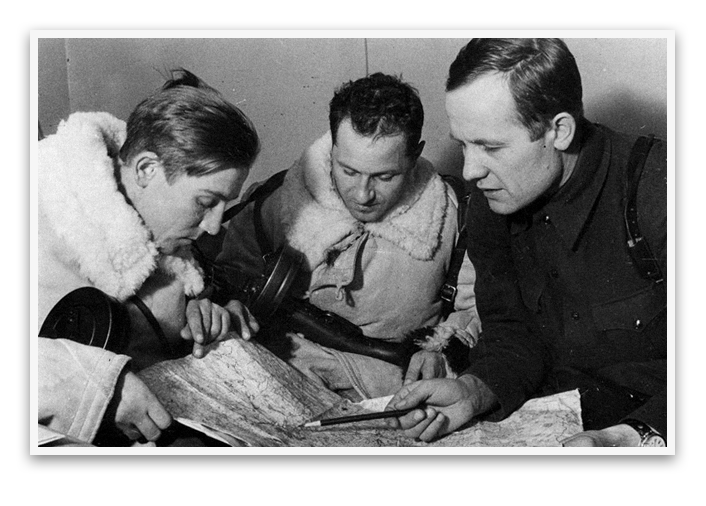
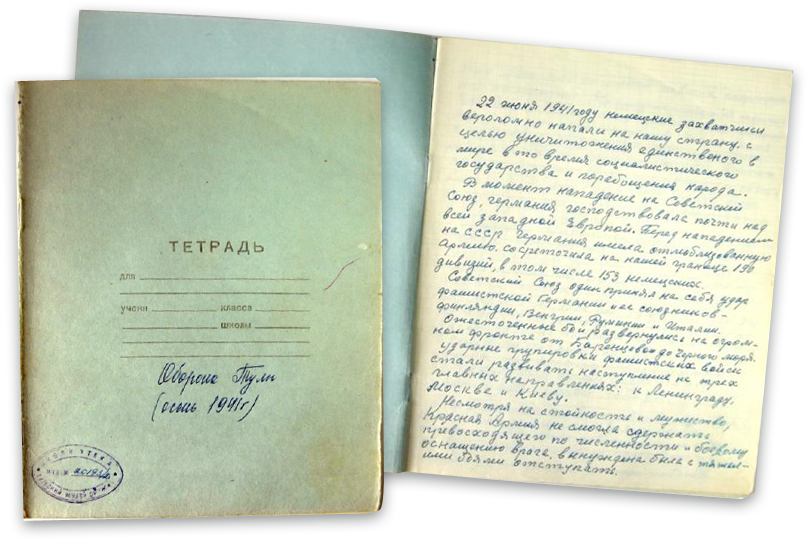
On October 29, the enemy occupied Yasnaya Polyana, Kosaya Gora and approached Tula. The 447th corps artillery regiment under the command of Colonel A.A. Mavrin arrived in Tula this day.
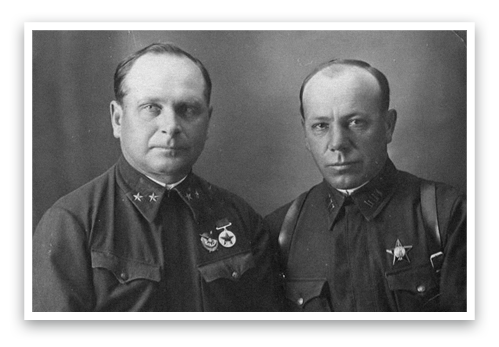
On October 30, Commander A.N. Ermakov’s order approved the establishment of the Tula military area headed by Major General V.S. Popov to directly lead the forces defending the city from the South. In the morning of that day, Nazi troops initiated violent attacks on the city. Enemy tank attacks were repelled by anti-aircraft guns of Lieutenant G. M. Volnyansky, who died heroically in that battle.
On October 30, the enemy succeeded in pressing the Tula workers regiment and occupying the part of Rogozhinsky settlement.
On October 31, the enemy undertook new attacks on the city, but they were all repulsed.
That day, the battle frontiers were occupied by the 154th infantry division, the 217th infantry division of Brigade Commander K.P. Trubnikov and part of the 50th army.
The 32nd tank brigade of Colonel I.I. Yushchuk and 34th guards mortar division arrived in Tula. Violent attacks of the enemy on the city continued until early November. The South-Eastern approaches to Tula were defended by the 413th infantry division headed by Major General A.D. Tereshkov.
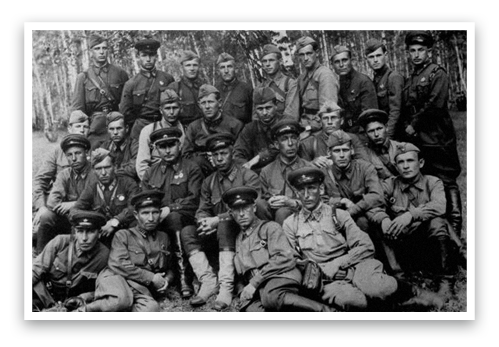
On November 8–10, the Nazis were chucked out of Rogozhinsky settlement and from the brick factory land.
The 50th army became part of the Western battlefront in early November. The chief of the Tula military area became Major General Ya.S. Fokanov
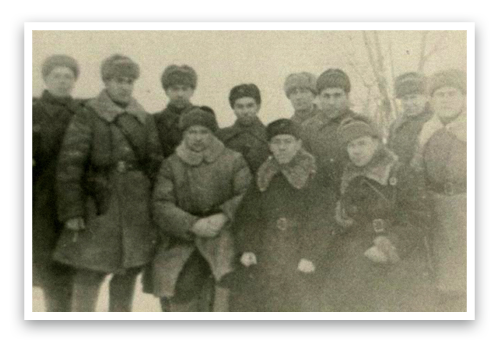
However, on December 2, the enemy broke through the defense troops of the 50th army to the North-East of Tula, occupied the Revyakino railroad station to cut off the rail- and motorways to Moscow. In the encirclement of Tula only a five kilometer isthmus remained. It was held by the 999th infantry regiment of the 258th infantry division and one tank company.
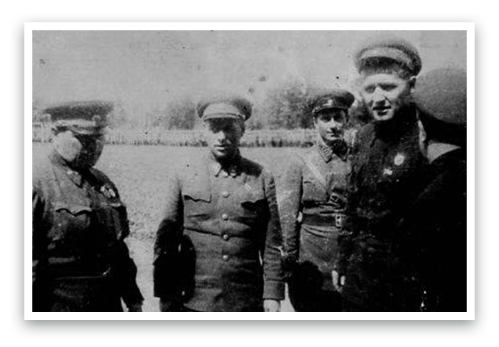
On December 4 and 5, the 112th tank division of Colonel A.L. Hetman dealt a severe blow to the enemy tank grouping, freeing the Revyakino station to defeat the enemy who tried to encircle Tula.
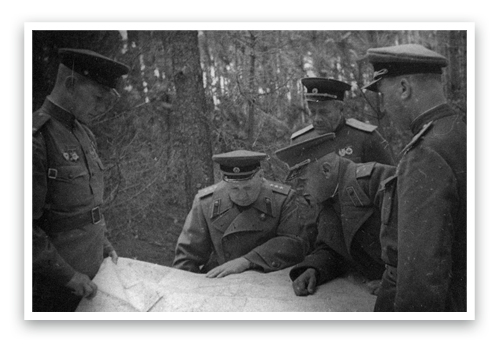
By nightfall on December 7, the enemy launched a human wave attack on the Western outskirts of Tula — Myasnovo suburban farm from the Maslovo village side. The Tula defenders having illuminated the road by spotlights destroyed the enemy’s battalion of the 521th infantry regiment.
It was enemy’s last attempt to break through Tula. Thus ended the Tula defensive operation.
On December 8, 1941, troops of the 50th army headed by Lieutenant-General I.V. Boldin since November 22, went on the offensive.
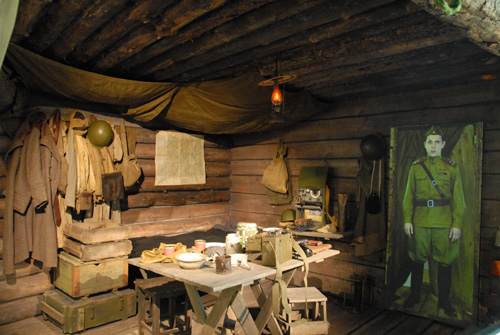
 Visitors to the exposition will learn about Tula’s heavy days of defense from the Nazis in October-November 1941 from the soulful and emotional narrations rendered by a “virtual teller” who participated in those events, Senior Lieutenant, Political Commissar of anti-aircraft artillery regiment Timofei Dmitrievich Dubinin.
Visitors to the exposition will learn about Tula’s heavy days of defense from the Nazis in October-November 1941 from the soulful and emotional narrations rendered by a “virtual teller” who participated in those events, Senior Lieutenant, Political Commissar of anti-aircraft artillery regiment Timofei Dmitrievich Dubinin.
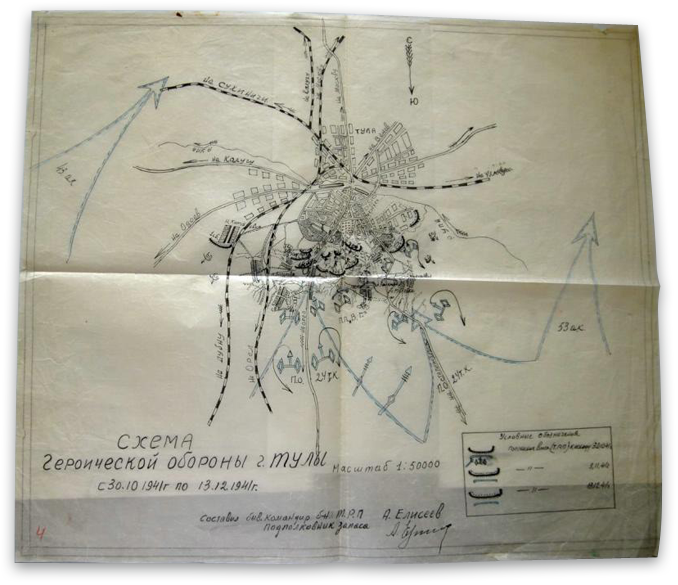
Born in Kustovskaya village, Ustyansky District of the Arkhangelsk region in a peasant family.
Before the Great Patriotic War he was actively engaged in public work carrying out various party and Komsomol assignments, holding readings of newspapers, conversations among the population, indulged into the cultural, educational and drama clubs at the school; he was a member of the parish committee of the mutual assistance peasant community in which he also ran errands for holding meetings among the peasants, for collecting taxes and other various activities.
Within the period of the Great Patriotic War V.G. Zhavoronkov was Chairman of the Tula Municipal Committee of Defense from October 1941, in December he was appointed member of the Military Council of the 50th army which defended the approaches to Tula.
In March 1943, V.G. Zhavoronkov was appointed First Secretary of the Kuibyshev Regional Committee and City Committee of the All-Union Communist Party (AUCP) (b) by the Decision of the Central Committee of the AUCP (b).
In August 1943, V.G. Zhavoronkov was sent to the Smolensk region as a Commissioner of the Central Committee of the AUCP (b) and the Council of People’s Commissars of the USSR to assist the Smolensk Regional Party Committee and Regional Executive Committee by the decision of the Central Committee of the AUCP (b). Here V.G. Zhavoronkov worked as a Commissioner until November 3, 1943, then he returned to Kuibyshev to resume the previous job, where he worked until April 1946.
From April 1946 until 1962 V.G. Zhavoronkov was employed as Inspector of the Central Committee of the AUCP (b), Deputy Minister of Trade of the USSR for general issues, Minister of Trade of the USSR, Deputy Minister of the Interior and Foreign Trade, Minister of State Control of the USSR, Deputy Chairman of the Soviet Control Committee.
In 1962 he was appointed Head of the Organizational and Instruction Department of the State Control Committee of the USSR Council of Ministers. At the end of 1962 he was appointed Head of the Central Bureau of Complaints and Suggestions of the Committee’s Workers.
By the Decree of the Presidium of the Supreme Soviet of the USSR No. 11282 dated January 18, 1977 Vasily Gavrilovich Zhavoronkov was awarded the title Hero of the Soviet Union and granted the Order of Lenin and “Gold Star” medal for his services to the Communist Party and the Soviet State, the great personal contribution to the organization of the heroic defense of Tula during the Great Patriotic War.
V.G. Zhavoronkov was awarded two Orders of Lenin, Order of October Revolution, Order of the Red Banner, two Orders of the Patriotic War 1st degree, two Orders of Red Banner of Labor and medals.
By the Decision of the Executive Committee of the Tula Municipal Council of People’s Deputies dated December 3, 1966, Vasily Gavrilovich Zhavoronkov was awarded the title of honorary citizen of Tula for achievements in the heroic defense of Tula during the Great Patriotic War of 1941–1945.